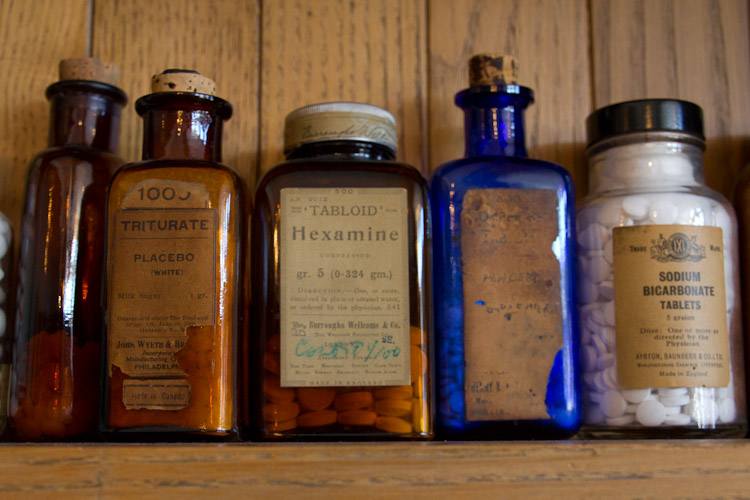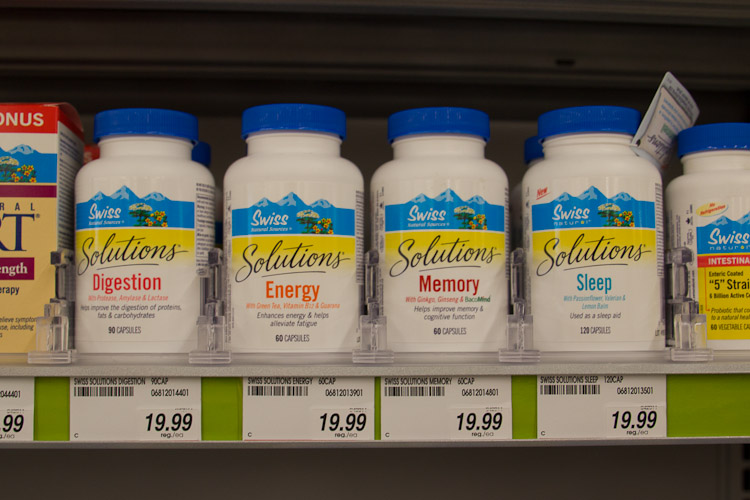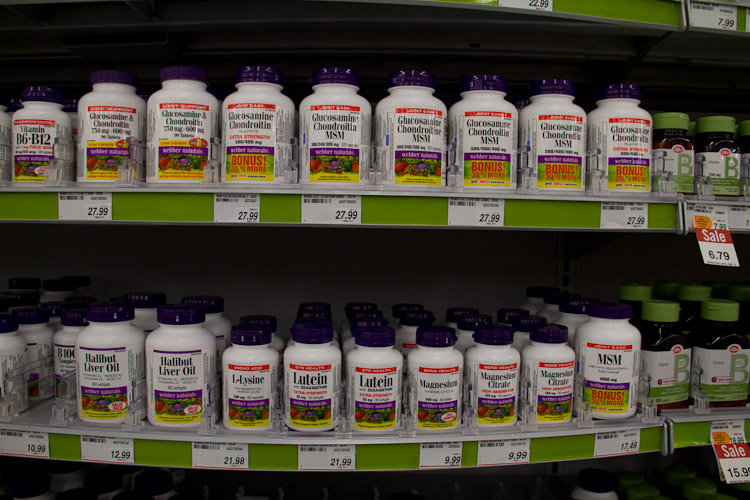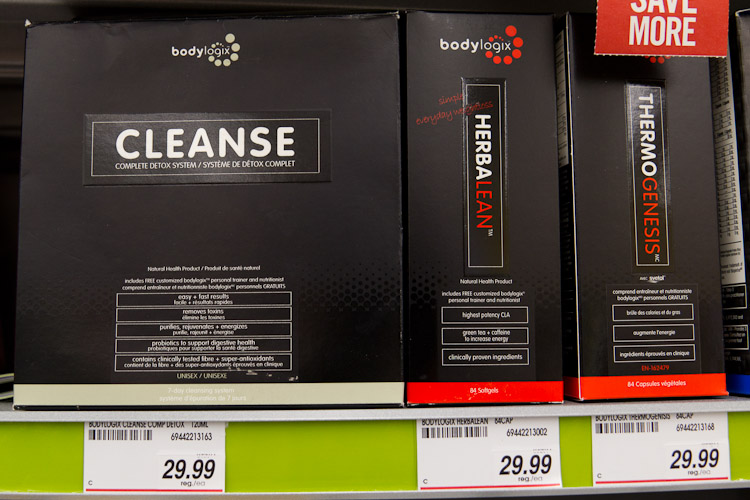Has the Pharmacy Really Changed?
Posted on Aug 31, 2011
Last weekend was Doors Open St. John's, and one of the most interesting sites we visited was Apothecary Hall on Water Street. The building was originally built in 1922, and has recently been restored to look like an authentic apothecary built after the great fire of 1892.
 Hundreds of bottles line the walls of Apothecary Hall, and many still contain remnants of their original contents. The guides were quite knowledgeable, and started our tour by showing us a book of very old prescriptions (apparently doctors had terrible hand-writing back then too).  Prescriptions have changed, though. Flipping through the pages of this old pharmacist's record reveals that in the 1920's a prescription from a doctor wasn't simply the name of a chemical and an associated dosage, but was instead more like a recipe for the pharmacist. In the period before Newfoundland joined Canada in 1949, there were no laws requiring companies to list ingredients on packaging. Companies imported patent medicines from abroad, and many drug stores also started making their own cure-all medicines.  Of course, old bottles of cod liver oil were displayed with special prominence - generations of school children growing up in Newfoundland had it shoved down the throats. Our tour guides had also obviously spent hours finding the funniest labels among the hundreds on display, and pointed them out to us with a giggle. From bottles labelled simply with "Arsenic" to others listing "Cocaine" among the ingredients, we laughed our way around the old apothecary, several times stopping to mention how thankful we all were for the progress medicine has made since then. With the help of modern medical science, we now judge many of these old medicines to be rudimentary and ineffective. We understand now that a potion containing extract of beef and sherry wine will probably not cure exhaustion, as the label suggests. You definitely don't need an M.D. to laugh at some of the products pedaled by the pharmacists of old.  It also seems pretty obvious from a modern perspective that many of these products were 100% marketing and 0% science. It seems likely that many of the companies producing these "medicines" were completely profit driven ventures, and the pharmacist must have known them to be unlikely to produce the advertised effects. Surely these products wouldn't be allowed to be sold in modern times - it IS illegal not to list the ingredients on a medicine bottle now. But what if it's not "medicine" you're selling, but instead a "dietary supplement"? The vagueness around these laws is actively exploited by corporations to sell billions of dollars worth of supplements. The reality is that today's average health product consumers can tell you as little about the metabolic pathway of glucosamine as a lay person from 1920 Newfoundland could tell you about the fate of Parish's Chemical Food in your body. It only takes a short wander through Shopper's Drug Mart to realize that things may not have progressed as much as we'd like to think. Of course, we undoubtedly have hundreds of drugs which have been scientifically proven to be effective, but then there's that other aisle: The "Herbal Remedies" aisle. What we find here is disturbingly similar to the medicine of old. The promise of a positive physiological effect is prominent in most packaging. The ingredient list is surprisingly vague, especially regarding plants - I'm sorry, but a perfectly shaped white pill is not simply "Gingko Biloba". How were these products prepared, and what are their possible side-effects?  To me, the scariest items in the herbal remedies aisle are the ones that do not sound natural at all. It doesn't seem completely unreasonable for the common health nut to gobble up pills containing concentrated cranberry extract, or even fish oil gel caps, but that's not all you'll find in the herbal remedy aisle. But there is also a number of products whose main ingredient is a concentrated and potent chemical, which, despite being originally extracted from something natural, isn't really deserving of that label now. The average consumer thinks these products are safe because they're natural and, I would argue, probably doesn't understand enough about them to be buying them for the purposes of self-medication.  I do recognize the value of many of the things in this aisle. For example, a person on a severely restricted diet may require supplements to maintain a normal homestatic condition and metabolism, such a omega-3 fatty acids or vitamins. It just seems obvious that many of these products are more about marketing than they are about their medical effect. One trend specifically seems to be on the rise. Cleansing products have quadrupuled their shelf space in recent years, all promising to undo all the bad choices you've made for your body. Specific products now target smokers, alcohol consumers and the overweight. From the fancy packaging, it would seem that the "cleansing" of today has come a long way from the apothecary's old potions. However, many of these products are simply a saline laxative like magnesium citrate combined with a mediocre tasting drink powder. Is that really much different than being told by an apothecarian-of-old to take a couple of Beecham's Pills and find a toilet? It is much harder to laugh condescendingly at the apothecary's ridiculous potions and preparations when you're standing in the herbal remedies section of a modern pharmacy chain-store. In fact, those old potions have two things in common with nearly every product on these shelves: A hefty price tag, and a likeliness that your personal experience will differ from the advertised effect. 
blog comments powered by Disqus |

|